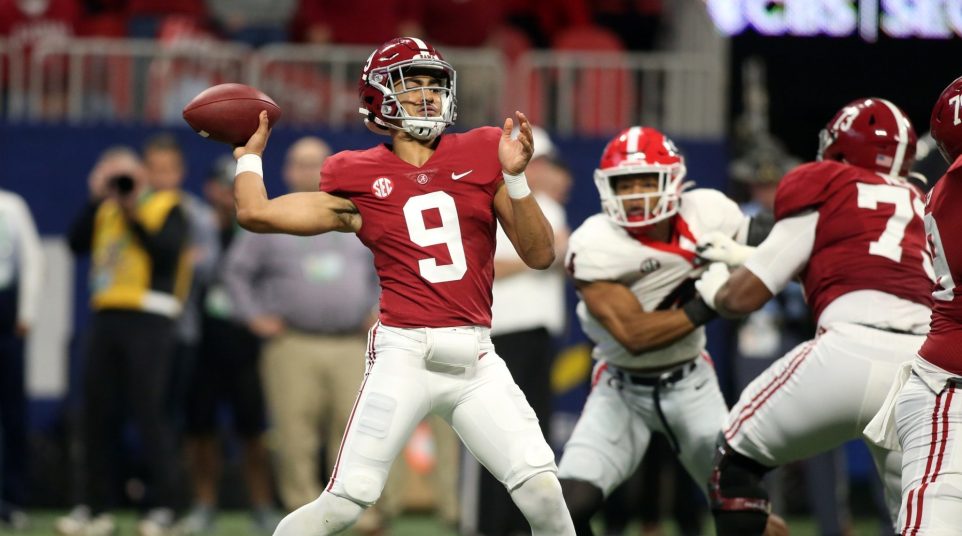
What Georgia should do differently on defense against Alabama in the rematch
If there’s a recurring mistake Georgia made in the SEC Championship Game, it was that the Bulldogs treated the Alabama offense like every other opponent on the schedule. The difficult lesson was that the Crimson Tide proved to be far from the other teams.
The difference was as much scheme and pre-snap movement as it was personnel. There’s only one Bryce Young and one Jameson Williams. It’s much tougher to replicate that talent than draw up Xs and Os on a coach’s board. Alabama scored 4 touchdowns on that Georgia defense, which previously allowed 7 in 12 games.
Surprisingly, Georgia couldn’t replicate the same kind of pressure Auburn delivered in the Iron Bowl, which produced 7 sacks. Georgia didn’t register one.
“We called a lot of the same calls we called the other games,” Kirby Smart said in Atlanta. “We didn’t get home or finish on the quarterback, and he was elite at getting the ball to the playmakers. He knew where to go with the ball. He keeps his eyes downfield with the rush, where a lot of quarterbacks wouldn’t do that. They’d look at the rush and start trying to run away from the rush, and we could run ’em down. But he did a tremendous job. He was mobile and made a lot of plays.”
How Georgia defends Bryce Young in the rematch next Monday night, and more importantly, what changes from the December meeting in Atlanta will go a long way toward deciding the national championship. As SEC Stat Cat shows below, Young was only pressured 11 times on 44 attempts on Dec. 4, and he completed 4 of those plays, including 2 for first downs.
As Greg McElroy pointed out the day after the game in Atlanta, Alabama exploited Georgia’s defense through pre-snap motions and shifts to create favorable matchups.
Alabama was the first UGA opponent this year to sport a 50% offensive Success Rate in standard time. In addition to scoring the most points and gaining the most yards, Alabama logged 13 explosive plays (18.8%). Mizz, Florida, and Ark finished next in line with 6 each vs the Dawgs
— SEC StatCat (@SEC_StatCat) December 5, 2021
Young attempts vs pressure
4/11, 55 yards, 2 first downs, 0 TD
70.2% Depth Adjusted Accuracy, 36.4% raw Accuracy https://t.co/eXGZbGUMyx
— SEC StatCat (@SEC_StatCat) December 5, 2021
With a Georgia defense chock full of future NFL talent, Alabama saw its former NFL head coaches and assistants, Bill O’Brien and Doug Marrone, prove their value perhaps more than in any other game this season as they identified where the pressure would come from, and adjusted accordingly.
Alabama converted 7-of-14 3rd-down plays, which was just slightly below its SEC-leading pace of 52% for the season. Smart made sure to stress on Monday that it wasn’t that Alabama beat Georgia on those plays, the Georgia defense simply allowed openings. But he also credited Young with being more elusive than he gets credit for, and that Alabama picked up the variety of pressures Georgia sent.
“We had some really critical third-down losses that, hey, they didn’t beat us, we busted,” Smart said. “You can’t do that and beat a good football team. You give them extra snaps whenever that happens.”
But it was dramatically better than what Georgia typically allowed this season, a 34% rate. Michigan was 8-for-15 against Georgia in the Orange Bowl semifinal, but other ranked teams, like Auburn, mustered just 5-of-18 3rd-down plays against Georgia. Arkansas was 3-for-12, and Kentucky was 9-for-19.
What the Georgia coaching staff must decide is if its personnel can simply do a better job creating pressure against Young with their existing plan and playbook, or if new wrinkles, and a more risky gamble, is needed. John Metchie’s absence is notable because the Georgia secondary can offer more attention to Williams — although Metchie’s replacement is 5-star Ja’Corey Brooks, the No. 2 receiver in the 2021 recruiting class. But if Georgia can’t improve on its 25% pressure rate, and Young’s 50% success rate against pressure, it will be the same song, but simply a different verse for Georgia against Alabama.
